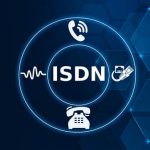There’s a lot of buzz around the Internet of Things (IoT), and many organizations are successfully implementing IoT solutions with positive results. However, the majority are getting influenced by the hype, the urgency to have an IoT play and are trying to force fit IoT into their landscape. The typical outcome of such an approach is lengthy discussions with multiple vendors and the conclusion that IoT is not needed (this is the best outcome in this scenario) or implementing a so-called IoT product that doesn’t solve the problem. In both the situations, IoT is blamed or deemed to be nothing more than a buzzword.
Many times, the solution to your problem is not IoT. Now let’s set the context here by defining what an IoT solution is, it’s a solution that impacts or changes the functionality of at least three layers in the IoT value chain. The IoT value chain has a device layer, operational and enterprise network layer, an MDM or IoT platform (can be COTS or bespoke), integration with the enterprise application layer, data processing/AI layer and a visualization component. I talked about IoT being force fitted as a solution, and a classic example here is the following scenario that played out with a manufacturing company. It’s a large manufacturer with different factories across different countries. The discussion started with the premise that they want an IoT solution to provide visibility across all their manufacturing units. After a period, it became evident that visibility was not what the business wanted, they wanted a system to accurately predict an impact of an unplanned event on their supply chain. They already had visibility of the factory floor through the PLC and SCADA systems installed in their factories. The problem statement was then re-defined, and the solution was a schedule optimizer with the capability to do what-if analysis. There are multiple COTS (commercial of the shelve) products available in the market that can do that. An IoT implementation was not needed.
We all know the importance of problem or outcome definition, but we tend to skip this step or lose track of it ever so often. So, the moral of the story; define the problem you are trying to solve or outcome you are trying to achieve, identify all potential solutions that can help you fix the problem/achieve the result, pick the best one based on ROI/DCF/time to market or whichever parameter is used in your industry. Once you have done this exercise and most organizations do this, it will become evident if the solution is a tweak to one of the layers in the IoT value chain, or the solution is implementing a COTS or a bespoke application, or you need a solution that interacts with three or more layers. As soon as its 3 or more layers, you need to call in the IoT experts who work across the value chain and can help identify the right products and provide services to help define, implement and support the solution.

Sangam is a former Happiest Mind and this content was created and published during his tenure.








